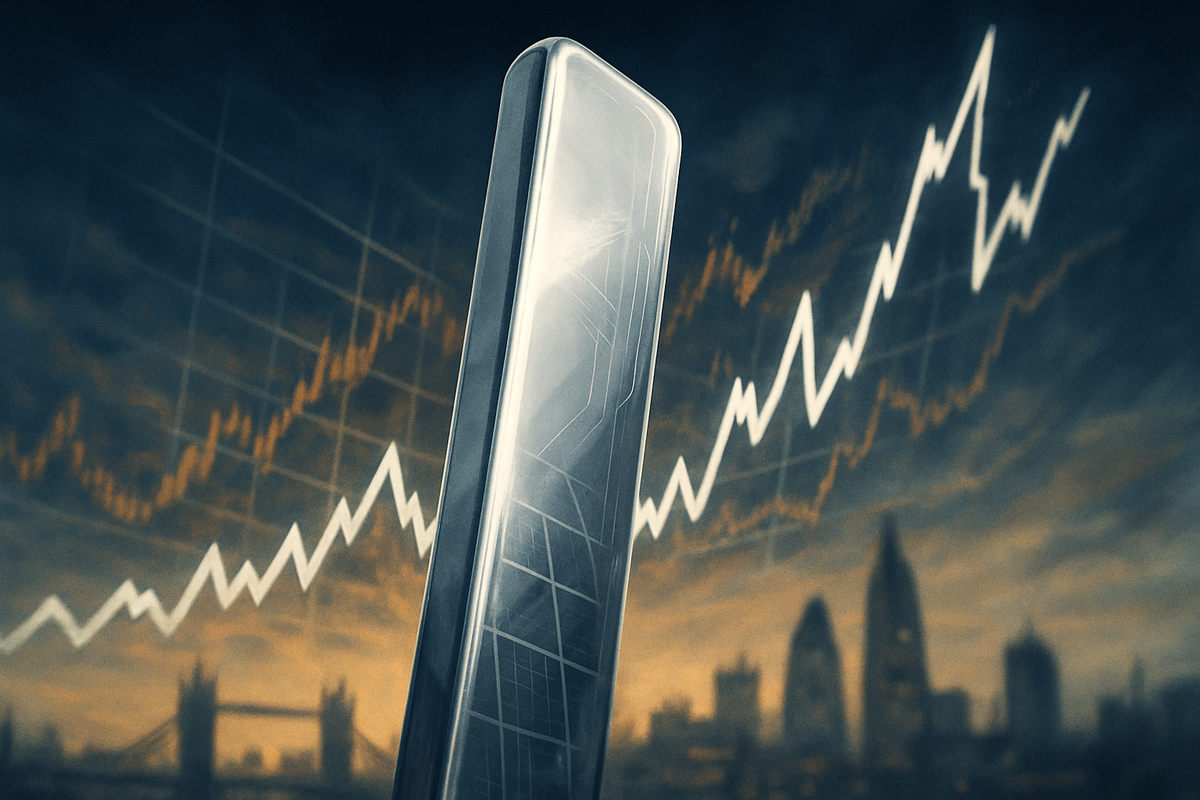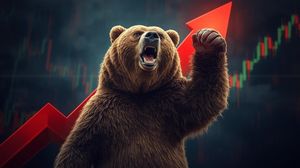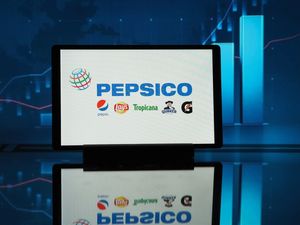
London's venerable bullion market finds itself in an unprecedented maelstrom as a historic silver squeeze intensifies, propelling prices of the precious metal to multi-decade highs and briefly touching all-time nominal records. As of October 10, 2025, spot silver prices have surged past the critical $50 per ounce mark, experiencing extreme volatility and creating chaotic trading conditions across global financial centers. This isn't merely a speculative frenzy; market analysts describe the current rally as fundamentally different, rooted in a confluence of robust industrial demand, persistent supply deficits, and a renewed flight to safety amidst escalating global uncertainties.
The immediate implications are profound, with London, a global hub for physical bullion, bearing the brunt of the squeeze. Lease rates for borrowing silver have skyrocketed to "astronomical" levels, reportedly between 35-39% annually, and free-floating silver inventory in London's vaults is dwindling rapidly, with some projections suggesting potential exhaustion within months. A rare and significant backwardation has emerged, with London spot prices commanding a premium of $2.00 to $2.50 per ounce over COMEX futures, a stark indicator of acute physical tightness and a market grappling with a severe shortage of immediately available metal.
Unpacking the Chaos: A Deep Dive into the Silver Squeeze
The current silver squeeze, as of October 2025, represents a culmination of several years of underlying market shifts. Silver, often seen as gold's lesser counterpart, has been the top-performing precious metal this year, with gains exceeding 70% year-to-date. This remarkable ascent is underpinned by a structural supply deficit that has persisted for seven consecutive years, with demand consistently outstripping supply. The projected deficit for 2025 alone ranges from 117 to 206 million ounces.
The timeline leading to this moment reveals a steady build-up of pressure. Throughout 2025, anticipation of supply deficits fueled the rally. By September, silver had already surged over 50% year-to-date, reaching a 14-year high above US$44. Early October saw prices closing in on the $49.95 record from 1980, with lease rates in London already signaling depleted stockpiles. The temporary absence of Chinese market participants during Golden Week holidays further exacerbated the squeeze by reducing the typical liquidity that backstops the London market. By October 9-10, 2025, spot silver hit a record high of $51.22 per ounce, with lease rates tripling and then escalating to an unprecedented 35-39%, clearly demonstrating severe physical scarcity.
Key players and stakeholders are experiencing diverse impacts. Industrial users, particularly in the burgeoning green energy sector, are significant demand drivers. Solar panel manufacturers are projected to consume approximately 195 million ounces annually, a fourfold increase since 2015, while electric vehicles (EVs) require significantly more silver than traditional combustion engines. Investors, seeking refuge amidst global economic uncertainties and fiscal instability, have poured capital into physically-backed silver Exchange Traded Funds (ETFs). Bullion banks, including major players like JPMorgan Chase, UBS, HSBC, and Goldman Sachs, are central as market makers, but their short positions may be increasingly vulnerable. The London Bullion Market Association (LBMA) oversees a market experiencing rapidly dwindling inventories, while COMEX in New York shows a disconnect, with its futures prices lagging behind London spot due to relatively more abundant inventories.
Initial market reactions have been characterized by extreme volatility and institutional recalibration. Silver's price swings are estimated to be 1.7 times faster than gold's, creating both lucrative opportunities and significant risks. The acute physical scarcity in London has led to a collapse in free-floating inventory, with analysts warning of potential exhaustion within months. In India, Kotak Mahindra Asset Management Company temporarily halted new lump-sum investments in its silver ETF-of-fund product, citing global physical tightness. The current squeeze is increasingly compared to, and in some metrics surpassing, the speculative rallies of 1980 and 2011, but with a crucial difference: it is driven by fundamental structural changes, suggesting a potentially more sustainable underlying rally.
Corporate Fortunes: Winners and Losers in the Silver Rush
The deepening silver squeeze is creating a clear bifurcation in corporate fortunes, with significant winners and challenged industries.
Silver Mining Companies stand as the primary beneficiaries. Higher silver prices directly translate into enhanced revenues, expanded profit margins (assuming stable production costs), and strengthened cash flows. This operational leverage means that even a modest percentage increase in silver prices can lead to a disproportionately larger boost in a miner's profitability. Major public silver producers like Pan American Silver Corp. (NASDAQ: PAAS), First Majestic Silver Corp. (NYSE: AG), Hecla Mining Company (NYSE: HL), Coeur Mining, Inc. (NYSE: CDE), and Fresnillo PLC (LSE: FRES) are seeing their stock prices react positively, attracting increased investment. Streaming companies such as Wheaton Precious Metals Corp. (NYSE: WPM), which acquire future silver production at fixed prices, also benefit immensely as the value of their acquired metal appreciates. The increased profitability incentivizes greater capital expenditure for exploration and development, potentially extending mine lives and discovering new deposits.
Conversely, Industrial Users of Silver face significant headwinds. Silver's unique properties, particularly its superior electrical conductivity, make it difficult to replace in many high-performance applications, forcing companies to either absorb higher costs, pass them on to consumers, or invest heavily in "thrifting" technologies and alternative materials. Solar panel manufacturers, including First Solar (NASDAQ: FSLR), JinkoSolar Holding Co., Ltd. (NYSE: JKS), and Canadian Solar Inc. (NASDAQ: CSIQ), are particularly vulnerable. Silver paste is a critical and substantial component in photovoltaic cells, and rising silver prices can severely squeeze profit margins or necessitate price increases for their products. Similarly, Electric Vehicle (EV) manufacturers rely on silver for critical electrical contacts in functions like automatic braking, power steering, and battery systems. While essential for performance and safety, the rising cost of silver increases manufacturing expenses for EV makers. General electronics manufacturers like Apple Inc. (NASDAQ: AAPL) and Samsung Electronics Co., Ltd. (KRX: 005930) could also face increased production costs for their silver-containing devices. These industries are now under pressure to innovate and adopt silver-lean technologies or explore alternatives to mitigate rising costs and supply risks.
Finally, Financial Institutions with Net Short Positions in silver futures contracts could face substantial losses. The backwardation in the market, where spot prices exceed futures, suggests immediate physical demand is outstripping supply, potentially trapping hedge funds and bullion banks in a classic short squeeze scenario. While the overall market size makes a purely retail-driven squeeze challenging, the current fundamental drivers, coupled with institutional participation, could force these entities to cover their positions at significantly higher prices. This highlights the inherent risks for those on the wrong side of a fundamentally driven commodity rally.
Wider Implications: A Redefinition of Silver's Role
The deepening silver squeeze transcends mere price movements; it signifies a fundamental redefinition of silver's role in the global economy and financial markets. This event fits into broader industry trends, particularly the accelerating green energy transition. Silver is now unequivocally recognized as a critical component in solar panels, electric vehicles (EVs), and 5G infrastructure. Industrial demand, which now accounts for approximately 50-59% of total silver usage, is a powerful, structural driver, ensuring persistent demand regardless of economic cycles. This trend, coupled with declining mine production and chronic underinvestment, has created persistent supply deficits for seven consecutive years, with a cumulative shortfall nearing 800 million ounces for 2021-2025.
The ripple effects are far-reaching. While silver mining companies are clear winners, industrial consumers face escalating costs, potentially impacting their profitability and competitiveness. This pressure could accelerate research into material substitution or "thrifting" to reduce silver content, a delicate balance given silver's irreplaceable properties in many high-performance applications. The squeeze also highlights vulnerabilities in global supply chains, pushing industries to re-evaluate sourcing strategies and invest in greater resilience. Economically, the surge in silver prices contributes to inflationary pressures, as higher input costs for goods containing silver are passed on to consumers, potentially influencing central bank policies and exacerbating existing inflation concerns.
From a regulatory and policy perspective, the current squeeze, like its historical predecessors, draws scrutiny. Concerns about market manipulation, though focused on fundamental drivers this time, remain ever-present. Regulators like the CFTC are tasked with ensuring market integrity, and extreme price movements can lead to interventions such as increased margin requirements on futures contracts. More significantly, governments are increasingly viewing silver as a strategic industrial resource. The US Geological Survey's inclusion of silver in its 2025 draft list of critical minerals could trigger government stockpiling and tax incentives, further tightening global supplies and signaling a recalibration of silver's perceived value.
Historically, this squeeze draws strong comparisons to the Hunt Brothers' silver squeeze of 1979-1980. In that instance, speculative accumulation drove prices to nearly $50, but the current rally, which has briefly surpassed that nominal record, is fundamentally different. While the Hunt Brothers sought to corner the market, the 2025 squeeze is driven by a severe, persistent supply deficit combined with surging industrial demand. This makes the current situation more akin to a natural market response to supply-demand imbalances rather than purely speculative manipulation. Lessons from 1980, particularly concerning regulatory responses to prevent market manipulation and ensure stability, remain relevant, though the underlying market dynamics are distinct. The 2011 rally and the 2021 Reddit-driven #silversqueeze also serve as reminders of silver's volatility and the fragility of physical supply when demand surges, but neither sustained prices above the $50 psychological barrier as the current squeeze has.
The Road Ahead: Navigating Silver's New Era
The future trajectory of the silver market is poised for continued dynamism, with both short-term volatility and a robust long-term bullish outlook. In the short term (late 2025 - early 2026), expect ongoing price swings as the market digests the rapid ascent. While temporary pullbacks due to profit-taking are probable, the strong underlying fundamentals are anticipated to support a sustained bullish trend. Some analysts suggest the immediate "squeeze" conditions might ease as Chinese market participants return from Golden Week, potentially increasing liquidity and moderating prices. However, anticipated interest rate cuts throughout 2025 are expected to provide significant support for precious metals, reducing the opportunity cost of holding non-yielding assets.
The long-term possibilities (2026 and beyond) for silver are overwhelmingly bullish. Its indispensable role in the accelerating green energy transition—from solar panels and electric vehicles to 5G infrastructure—guarantees persistent industrial demand. Coupled with declining mine production and consistent supply deficits, this structural imbalance positions silver for substantial appreciation. Long-term forecasts are increasingly ambitious, with predictions ranging from $60-$80 per ounce in the medium term to triple-digit figures in a prolonged bull market. The current gold-to-silver ratio, significantly above its historical average, further suggests silver remains undervalued relative to gold, indicating considerable room for outperformance.
Strategic pivots and adaptations will be crucial for all market participants. For investors, diversification into silver, whether through physical bullion, coins, or silver-backed ETFs like iShares Silver Trust (NYSE: SLV) or abrdn Physical Silver Shares ETF (NYSE: SIVR), is gaining importance. Vigilant monitoring of central bank policies, physical inventory levels in major hubs, and industrial demand trends will be key. Given silver's pronounced volatility, robust risk management strategies and a long-term perspective are essential. Industries heavily reliant on silver must prioritize supply chain resilience, exploring substitution and "thrifting" technologies to mitigate rising costs and secure critical inputs amidst tightening physical markets.
Market opportunities include substantial price appreciation driven by the structural deficit and growing demand, silver's continued role as an inflation hedge, and direct exposure to the high-growth green energy and advanced technology sectors. However, challenges persist, primarily silver's extreme volatility, the potential for industrial substitution at sustained high prices, and ongoing market dislocations between physical and paper markets. Potential scenarios range from a sustained bull market, where prices consolidate around current highs before steadily climbing, to temporary corrections due to profit-taking. A less likely, but non-zero, scenario involves a full-blown parabolic squeeze if physical shortages intensify dramatically, potentially pushing prices to unprecedented levels rapidly.
The Dawn of a New Silver Era: A Comprehensive Wrap-up
The historic silver squeeze of 2024-2025 marks a profound inflection point for the precious metal, fundamentally reshaping its market dynamics and perception. Unlike previous rallies driven largely by speculation, this event is rooted in a potent combination of enduring industrial demand, particularly from the green energy revolution, and persistent, structural supply deficits. This confluence has exposed the fragility of physical silver inventories, particularly in key trading hubs like London, leading to unprecedented lease rates and a stark disconnect between paper and physical markets.
Key takeaways from this event underscore silver's dual and increasingly critical role: not only as a traditional monetary metal and inflation hedge but, more significantly, as a strategic industrial commodity indispensable for modern technological advancement and global decarbonization efforts. The market's response, characterized by soaring prices and acute physical tightness, signals that the era of "cheap silver" may be drawing to a close, necessitating a recalibration of its value by both investors and industrial consumers.
Moving forward, the silver market is poised for continued elevation, albeit with inherent volatility. The underlying fundamentals—relentless industrial demand, declining mine supply, and growing investment interest—are powerful forces expected to drive prices higher in the long term. While short-term corrections due to profit-taking or temporary liquidity injections are possible, they are likely to be viewed as buying opportunities within a broader bullish trend. This "new era" for silver demands strategic adaptation from all participants.
For investors, the lasting impact will likely be a reinforced understanding of silver's unique value proposition and its potential for significant capital appreciation. It underscores the importance of diversifying portfolios with tangible assets that offer protection against inflation and exposure to critical growth sectors. What investors should watch for in the coming months includes central bank monetary policies (particularly interest rate decisions), global industrial growth trends, physical inventory levels in major vaults, and the gold-to-silver ratio as an indicator of relative value. Geopolitical developments and any potential regulatory actions regarding silver's designation as a critical mineral will also be crucial. This historic squeeze is not merely a transient market event but rather a catalyst for a potentially more permanent shift in silver's market valuation and its strategic importance in the global economy.
This content is intended for informational purposes only and is not financial advice







